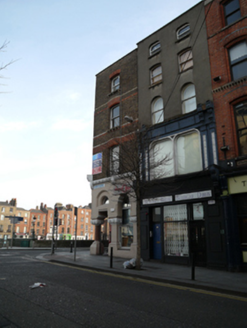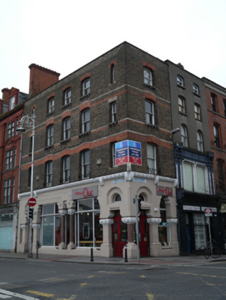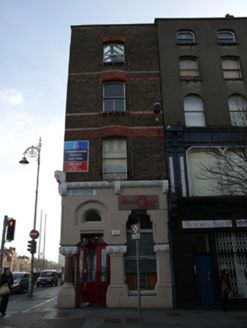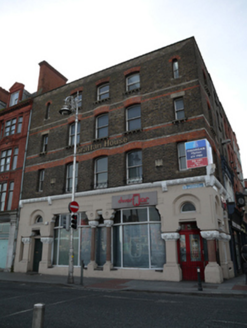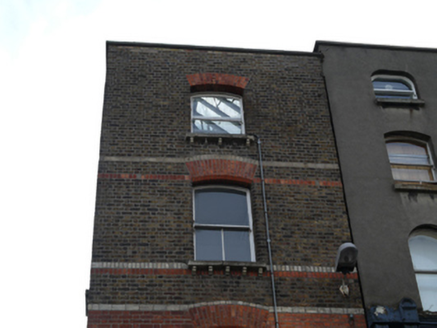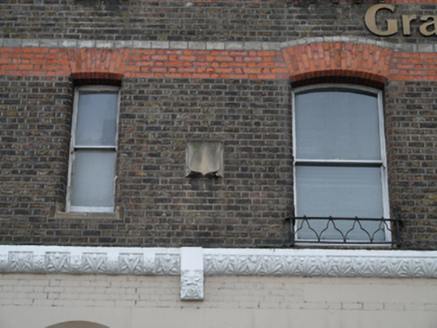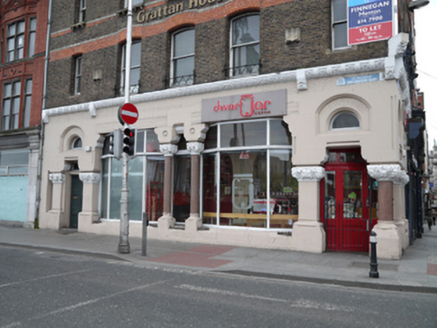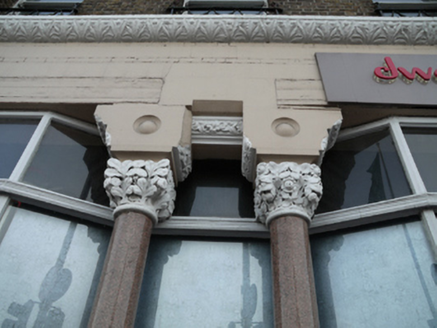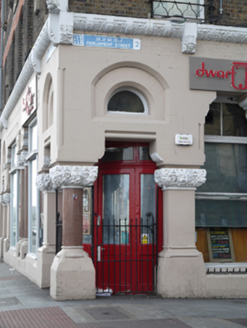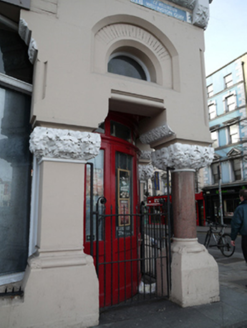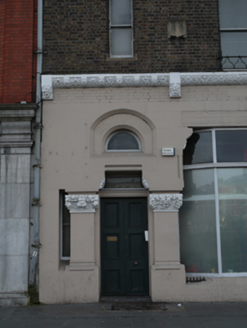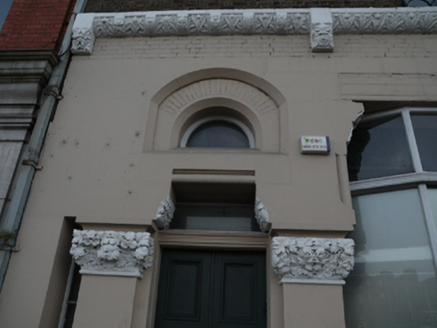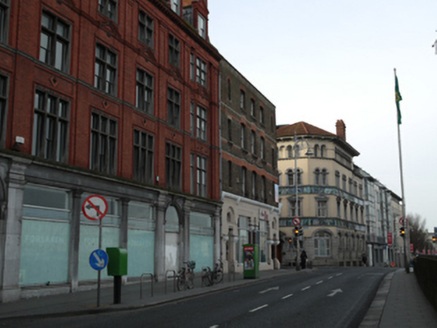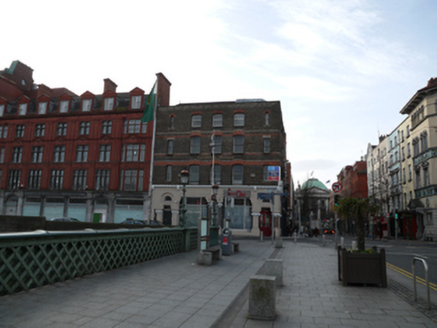Survey Data
Reg No
50020007
Rating
Regional
Categories of Special Interest
Architectural, Artistic, Social
Original Use
Building misc
In Use As
Restaurant
Date
1860 - 1900
Coordinates
315442, 234158
Date Recorded
28/02/2015
Date Updated
--/--/--
Description
Corner-sited attached five-bay four-storey former commercial premises, built c.1880, having wraparound shopfront and one bay to Parliament Street. Now in use as café with offices to upper floors. Hipped roof having rooflights hidden behind rebuilt brown brick parapet with render coping to front (north) and west elevations. Brown brick walls laid in Flemish bond to upper floors having polychrome brick string courses and moulded masonry plaques. Segmental-headed window openings with chamfered red brick voussoirs and surrounds, cut granite sills having moulded yellow brick corbels, wrought-iron railings to first floor windows, and one-over-one pane and one-over-two pane timber sliding sash windows. Some square-headed and round-headed window openings to front. Moulded masonry floral cornice, with decorative brackets, over brick and masonry to shopfront, with plinth course, masonry and polished red granite columns having moulded foliate capitals. Shouldered-arch window openings with timber framed fixed pane windows, canted to front, spikes to sills. Angled corner entrance to north-west corner having shouldered-arch openings supported on polished granite column with recessed convex curved double-leaf half-glazed timber panelled door, overlights and side-lights. Round-headed recesses with plain fanlights. Wrought-iron gates. Shouldered-arch side door with double-leaf timber panelled door and fanlight. Steel-framed basement lights to footpath to front. Situated to east of Essex Quay and north end of Parliament Street.
Appraisal
Wellington Quay was constructed c.1815 and this building, with its ornate detailing and corner entrance, forms an imposing landmark at the junction with Parliament Street. Originally built as Dollard's Printing House, Casey (2005). The upper floors are enlivened by polychrome brick detailing which adds tonal variation, and is typical of its time. The prominence of the shopfront is asserted through the use of embellishments, while the polished granite provides textural contrast with the smooth walls. The shopfront adds great visual interest to the streetscape and displays skilled craftsmanship. Historic maps show the building numbered as 1 Essex Bridge. Thom's Directory of 1862 describes the previous building on the site as in use as a hatters.
